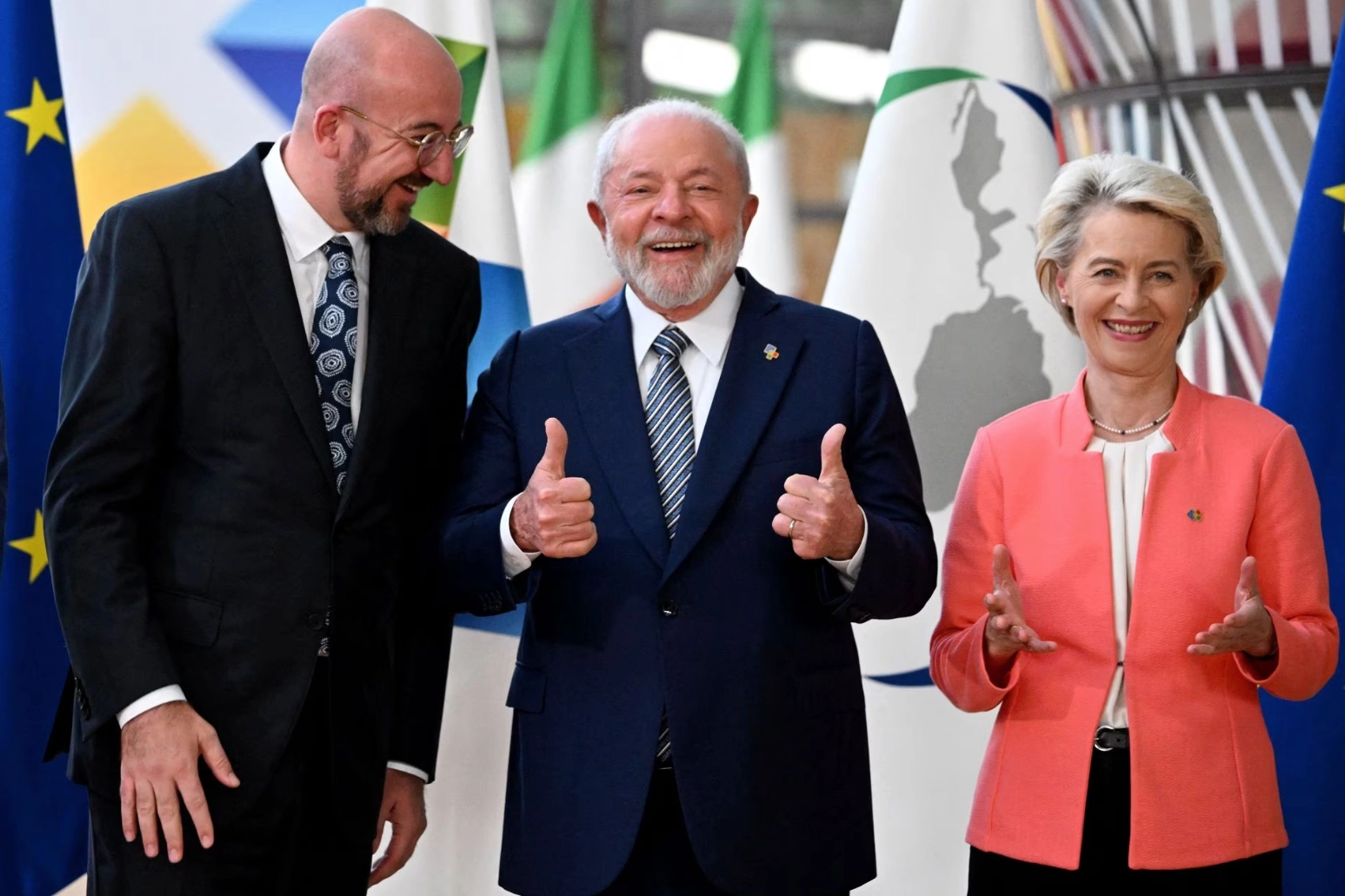
Coauthor María Victoria Alvarez
The III EU-CELAC Summit took place last week. What lessons can we draw for the future of interregional relations? Beyond the traditional rhetoric and calls to renew and strengthen relations between the two regions, the EU-CELAC Summit left a bittersweet feeling and presented both opportunities and challenges for both sides.
The consensuses seem to have added up in breadth, but not in depth or even in a strategic sense. The extensive 41-point final declaration did not leave aside any issue of the complex and broad bi-regional agenda, such as climate change, sustainable development, gender equality, protection and sustainable use of the oceans, access to drinking water, responsible digital transformation, social justice and the fight against corruption and crime. This is an extensive and challenging list of joint topics, with no prioritization.
Instead of being able to focus on building strong consensus on a few key issues, the final declaration faded into the lowest common denominators characteristic of the bi-regional agenda, albeit imbued with a cooperative tone and classic symbolic references. The priority issues appeared more clearly in the roadmap: raw materials, organized crime and drug trafficking, new global financial architecture, green and digital transition, and, of course, environment and climate change.
At least it can be noted that Latin American and European governments returned to dialogue at the highest level after an eight-year pause, which was due more to Latin American disunity than to the European Union’s lack of interest. Latin America was divided between right-wing and left-wing governments, the Community of Latin American and Caribbean States was temporarily paralyzed and the Brazilian government did not participate in CELAC meetings until the end of 2022.
Latin American disunity continues. While Europe has a common position on the Russian invasion of Ukraine, Latin America has a variety of positions, ranging from unequivocal condemnation of Russia to dithering over Russian aggression, to an openly pro-Russian stance. The increasingly isolated Nicaraguan regime managed to delay for a long time the adoption of a joint declaration because of the paragraph on the Ukrainian conflict (which in the end it did not accept). And a Lula disagreed with his young Chilean counterpart’s statement on the invasion.
The statement on the Ukrainian conflict was quite disappointing from a European perspective and shows that there is no strategic partnership between the two regions on this existential issue for Europe. There is also a gap between Latin America and Europe about the protection of human rights and democracy. The joint summit declaration mentions the crimes of the past (slavery) but is silent about the crimes against human rights in the present. Given the situation in many Latin American countries, the reaffirmation of shared values regarding “free and fair, inclusive, transparent and credible elections” seems cynical.
The summit demonstrated that Latin America and Europe are far from a strategic partnership. What exists are overlapping strategic interests in certain areas. Europe has been very willing in the joint declaration to come closer to Latin American positions to facilitate cooperation between the two regions, for example, by accepting the principle of common but differentiated responsibilities (taking into account respective capabilities) to mitigate the adverse effects of climate change.
But the summit has also revealed a tendency for the EU to cooperate bilaterally rather than multilaterally with partners selected on a case-by-case basis on specific issues. Based on political affinity, the EU also seeks closer and broader cooperation with individual countries, as demonstrated by the signing of bilateral agreements with Chile and Uruguay during the Brussels meeting.
At the same time, the joint declaration is an indicator of the heterogeneity of Latin America as a region and of the different national priorities, as it contains issues that are of particular importance to specific governments or sub-regions. Thus, slavery is condemned as a crime against humanity and reference is made to the Caribbean community’s ten-point plan for restorative justice.
It also calls for lifting the embargo on Cuba, mentions the deteriorating public security and humanitarian situation in Haiti, and reaffirms support for the peace process in Colombia. The text also encourages a constructive dialogue in the negotiations on Venezuela in Mexico City. And, remarkably, Argentina manages to have the issue of sovereignty over the Malvinas Islands mentioned for the first time. On the other hand, the final text only takes note of the work being done on the EU-MERCOSUR agreement.
Before the summit, the EU had included Latin America in its Global Gateway program, thus also offering material incentives for closer cooperation. However, this presupposes a willingness to cooperate on the part of the Latin American governments. It should not be forgotten that the interregional agenda connects highly sensitive issues for Latin America since the EU has rediscovered the potential of this region as a reliable partner in energy or strategic raw materials, but this could encourage unsustainable practices of natural resource exploitation.
At the same time, it is important to note that Latin America is not the EU’s only partner. This is often overlooked in Latin America. Not only Latin America has several options in international politics, but also the EU. To give just one example, green hydrogen can also be produced in Africa, and many Asian countries are more economically promising than Latin American countries in many aspects.
It has been important for the EU and CELAC governments to meet, to dialogue, to recognize commonalities and disagreements. But there is a risk of repeating the experience of other summits that failed to revitalize the momentum and relevance of these relations, nor the interest of leaders, economic, political, or social figures, or public opinion, and managed agendas that were diluted in a wide range of issues.
The III EU-CELAC Summit demonstrated that the two regions are far from having a common strategic vision in international politics. Also, there are deficiencies in the Latin American consultation process and profound disagreements in their respective worldviews. In short, both regions have yet to meet again and exploit the full potential of their political, economic, cultural, and social ties.
María Victoria Alvarez is a Professor and Researcher at the Faculty of Political Science and International Relations of the National University of Rosario (UNR), Argentina. Jean Monnet Chair at the UNR. Director of the Study Group on the European Union at the UNR.
*Translated from Spanish by Janaína Ruviaro da Silva


